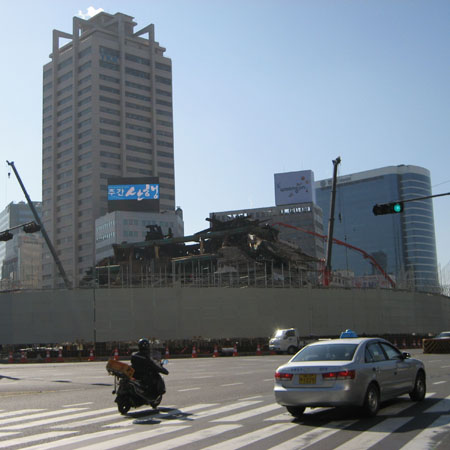
On February 10th, just a few blocks from my hotel, an arsonist burned Namdaemun or “South Gate,” in central Seoul. It was one of the oldest original structures dating back 600 years, and had survived the Korea War as well as the various occupations of foreign countries. The Cultural Heritage Administration is stated that it will spend over US$20 million to rebuild the gate over the next three years.
In Seoul, people don’t navigate via street addresses. Instead, people use landmarks to describe locations. For example, people often give taxi directions in terms of going down a main road and turning at the movie theater. Namdaemun, then, was an important fixture for more than historic reasons. It also held a function, being used to explain the location of surrounding destinations such as the street markets, malls and office buildings that surround it.
Central Seoul has many palaces, walls and gates which are have reconstructed over many years, and now Namdaemun will join them. The historic sites have been built and rebuilt. Just north of Namdaemun, is Gwanghwamun, another gate dating back to the same period. The structure had gone through several reconstructions. It is also currently being disassembled and moved 15 meters and also rotated to realign it with the Gyeongbok Palace, its original position.
The idea of building and rebuilding cultural historic monuments is fascinating. We think of these structures to be permanent, however like all architecture and cities, they get built, altered, torn down, and rebuilt.



